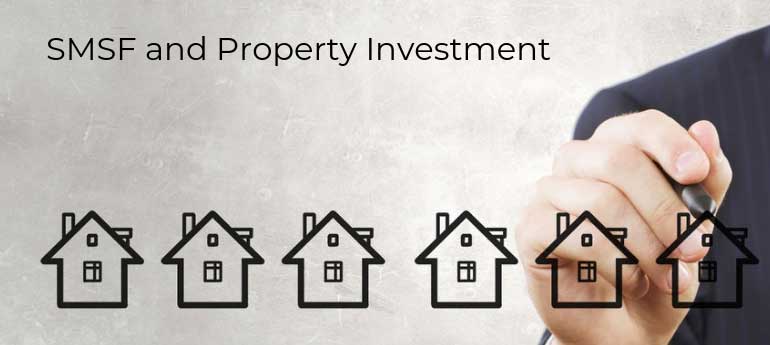If you’re a long-term property investor considering the option of purchasing property through your Self-Managed Super Fund (SMSF), you’re likely weighing the pros and cons of this investment structure. While investing in property outside of your superannuation gives you flexibility, an SMSF offers a tax-advantaged way to invest for your retirement, but there are significant differences to consider.
In this email, I’ll explain what you need to know before making the leap into SMSF property investment, the benefits it offers, and how it differs from regular property investment.
Regular Property Investment vs. SMSF Property Investment
Investing in property outside of your superannuation is straightforward—whether you’re purchasing your own home, an investment property, or a commercial property, you have flexibility and control over your investment decisions. However, there are restrictions and unique advantages when you choose to invest through an SMSF. Let’s look at the key differences.
1. Eligibility & Restrictions
- Regular Property Investment: Outside of your super, you can buy almost any type of property. The main criteria are the location, your budget, and your investment strategy. You can rent it out to tenants, flip it, or use the property for personal purposes (subject to local zoning laws).
- SMSF Property Investment: When you purchase property within an SMSF, it must be for the purpose of growing your retirement wealth. You cannot use the property for personal benefit in any way. This means no renting it out to yourself or your family members, nor can you live in it. The property must be a long-term investment with the goal of providing income and capital growth for the super fund.
2. Financing the Property
- Regular Property Investment: You can borrow against the value of your property, use your own savings, or leverage the equity in other properties. In most cases, lenders are willing to provide financing for up to 80-90% of the property’s value, depending on your circumstances.
- SMSF Property Investment: Financing an SMSF property is more complex. To do so, you must set up a Limited Recourse Borrowing Arrangement (LRBA), which is a special type of loan designed specifically for SMSFs. Unlike traditional property loans, the loan is limited in its recourse, meaning the lender can only claim the property itself in case of default—not your personal assets. Additionally, you can generally only borrow up to 70% of the property’s value through an SMSF loan, and the loan must be repaid with the rental income or additional contributions to your SMSF.
3. Access to Funds
- Regular Property Investment: One of the biggest advantages of investing in property outside of your super is that you can access the rental income immediately and make decisions about selling or refinancing whenever you like. You can also access equity through a home loan or refinancing.
- SMSF Property Investment: Any income generated by the property (such as rental income) or profits from the sale of the property will go directly back into the SMSF, growing your super balance for retirement. You cannot access these funds until you reach retirement age, which generally means you’re tying up your funds for the long term. This is an important consideration if you anticipate needing liquidity before retirement.
4. Taxation of SMSF Property Investments
The tax advantages of SMSF property investments are one of the key reasons many investors choose this structure for their property holdings. Here’s how the tax rules work:
- Regular Property Investment: When you invest in property outside your super, the rental income is taxed at your personal income tax rate. Additionally, if you sell the property, the capital gain is taxed according to your personal tax rate, and you may be liable for capital gains tax (CGT).
- SMSF Property Investment: The tax treatment within an SMSF is much more favorable:
- Income Tax: Income generated from property held in an SMSF is taxed at a flat rate of 15%, which is lower than personal income tax rates (which can go as high as 45%).
- Capital Gains Tax (CGT): If the property is held for more than 12 months, your SMSF qualifies for a one-third CGT discount. This means that any capital gains made on the sale of the property are reduced by one-third before being included in the SMSF’s assessable income. For example, if your SMSF made a $100,000 capital gain, it would only be taxed on $66,667 after applying the discount. This can result in significant tax savings.
- Income Tax: Income generated from property held in an SMSF is taxed at a flat rate of 15%, which is lower than personal income tax rates (which can go as high as 45%).
- Example of CGT Tax Benefits:
Let’s say your SMSF sells a property it has held for over 12 months and generates a $100,000 capital gain. After the one-third CGT discount, the taxable capital gain reduces to $66,667. This is then taxed at the SMSF’s rate of 15%, meaning the tax on that gain would be $10,000.
- Retirement Phase: If your SMSF is in the pension phase, meaning you’re drawing from your superannuation, any income or capital gains within the fund may be tax-free. This is one of the key advantages of using an SMSF for long-term property investment—it allows your investments to grow in a tax-effective way until you retire.
5. Diversification and Fund Balance
- Regular Property Investment: Outside of your super, you can diversify your investment portfolio by adding stocks, bonds, or other assets. There’s also no requirement to maintain a specific balance to buy property.
- SMSF Property Investment: In an SMSF, your property investment is typically a large portion of the fund’s value. The key challenge here is ensuring that you maintain adequate diversification within your fund. SMSFs are often more concentrated in property, so it’s important to consider how much of your fund you want tied up in one asset class. It’s also worth noting that most SMSF property investors need a minimum balance of $200,000 to make SMSF property investments cost-effective, due to the setup costs, legal compliance requirements, and financing constraints.
6. Fees and Costs
- Regular Property Investment: Investing in property outside of your super involves standard property costs such as management fees, maintenance, repairs, and tax-related expenses. You also have the option of claiming various tax deductions to reduce your tax liabilities.
- SMSF Property Investment: When you invest through an SMSF, the fees are generally higher due to the complexity of managing an SMSF. You’ll incur costs for setting up the fund, managing it, and meeting legal and compliance requirements (such as annual audits). Professional advice from accountants, financial planners, and property experts is typically necessary, and these costs should be factored into your decision.
SMSF Property Investment as Part of Your Entire Investment Strategy
An important thing to remember is that an SMSF property investment doesn’t need to be a separate or isolated part of your investment strategy. In fact, it can work seamlessly with your other investments to create a diversified and holistic approach to building wealth for your retirement.
How SMSF Property Fits into Your Broader Strategy:
- Leverage and Combine Resources: You can combine funds from your SMSF with your personal investment strategies. While the SMSF handles your long-term property investment (tax-efficient and retirement-focused), your personal investments outside of super can offer more flexibility. For instance, you can use equity or rental income from properties outside of your super to help fund or finance additional investments within your SMSF.
- Diversified Income Streams: Using both SMSF and non-SMSF property investments means you can generate different income streams. Rental income from your SMSF property can boost your retirement savings, while rental income from non-SMSF properties can support your current lifestyle or contribute to other wealth-building efforts.
- Strategic Use of Personal and SMSF Capital: By structuring your property portfolio to include both SMSF and non-SMSF assets, you can use personal capital for more flexible investments (e.g., flipping houses or investing in shares) while taking advantage of SMSF tax benefits to hold long-term assets, like rental properties, for retirement.
- Contingency Planning and Flexibility: Because SMSFs require a long-term commitment, it’s helpful to maintain a balance between investments you can access now and those that will grow your wealth over time for your retirement. Integrating SMSF property investments into your larger strategy allows for future-proofing your wealth in both the short and long term.
While you cannot access SMSF funds until you retire, aligning it with your overall investment strategy ensures that your wealth continues to grow efficiently. Both strategies complement each other to help you build wealth without taking on undue risk.
Key Considerations Before Moving Forward
If you’re seriously considering SMSF property investment, here are some important things to keep in mind:
- SMSF Balance Requirements: Most experts recommend a minimum fund balance of $200,000 to make SMSF property investment viable. This ensures that the costs associated with setting up and maintaining the SMSF are justified by the potential returns.
- Long-Term Commitment: Property in an SMSF is a long-term investment. You cannot access the rental income or sale proceeds until retirement, and properties are not as liquid as other investment types.
- Complexity: SMSF property investment requires careful planning, expert advice, and ongoing management. It’s essential to work with financial advisers, property specialists, and accountants to ensure compliance with SMSF laws and maximize the benefits. If you’re unfamiliar with the restrictions around property usage in an SMSF, you’re not allowed to do these things with property in your SMSF—and overlooking them could lead to serious compliance issues.
If you’re considering this type of investment, or if you want to discuss how it can fit into your broader strategy, feel free to reach out. We can help you navigate these decisions and connect you with professionals who can guide you on the legal and financial aspects of SMSF property.




